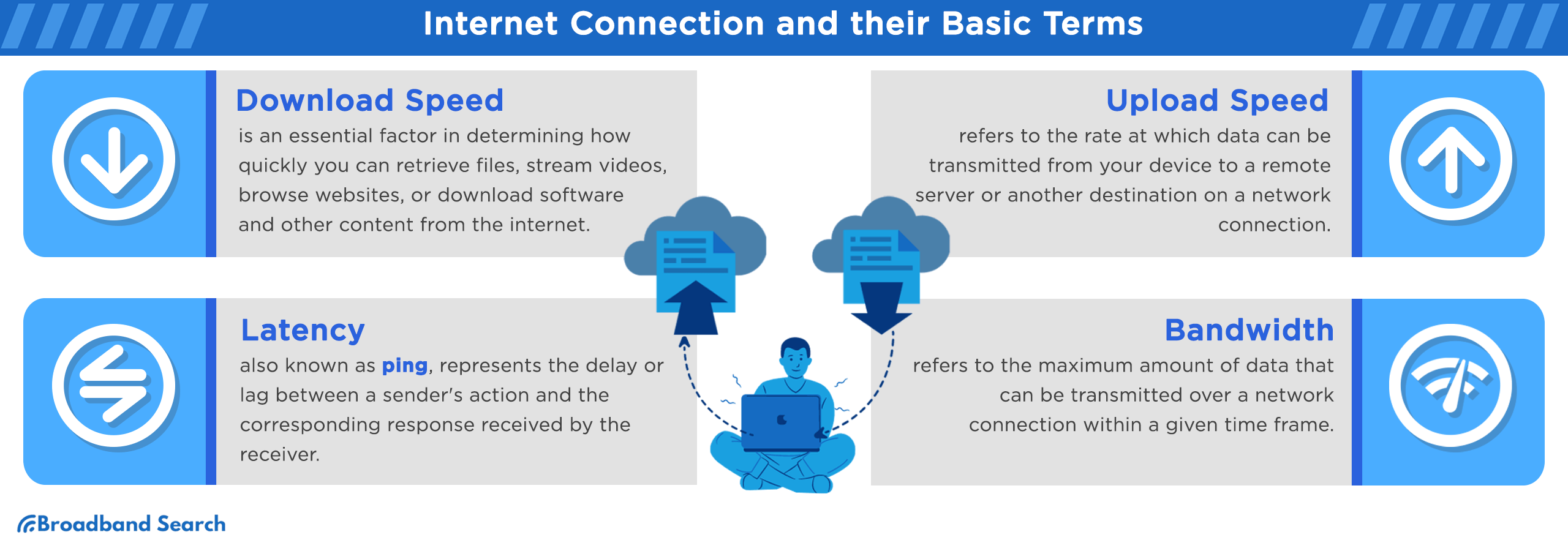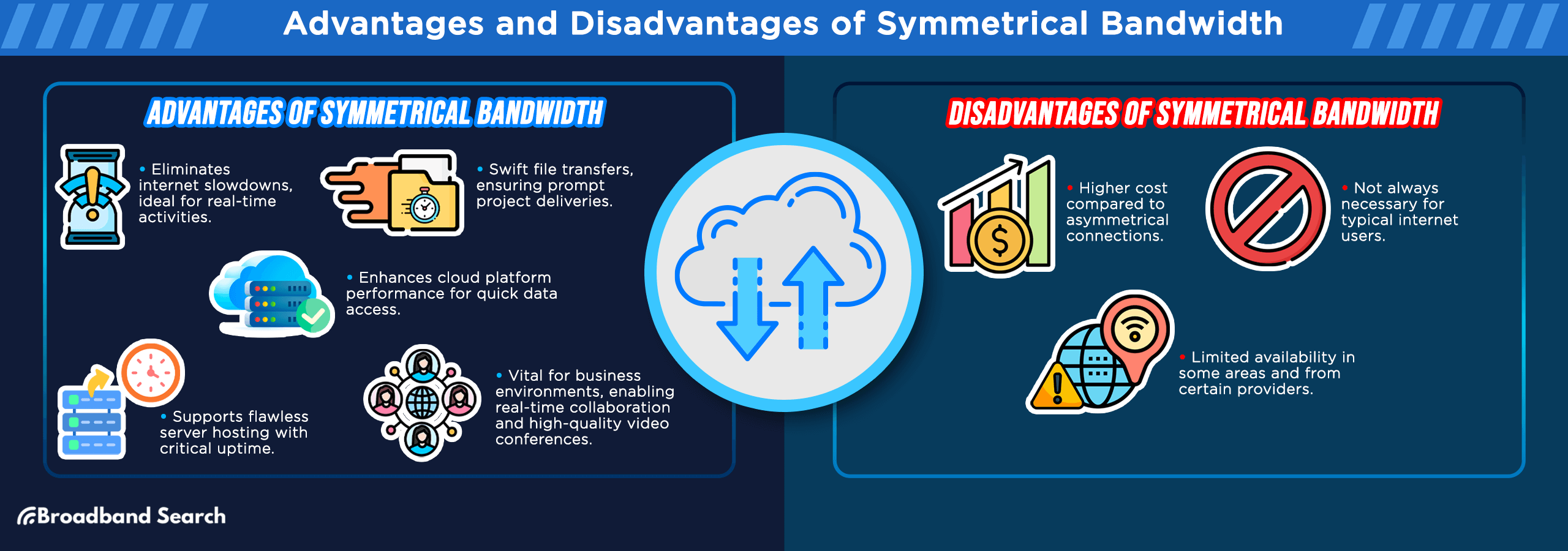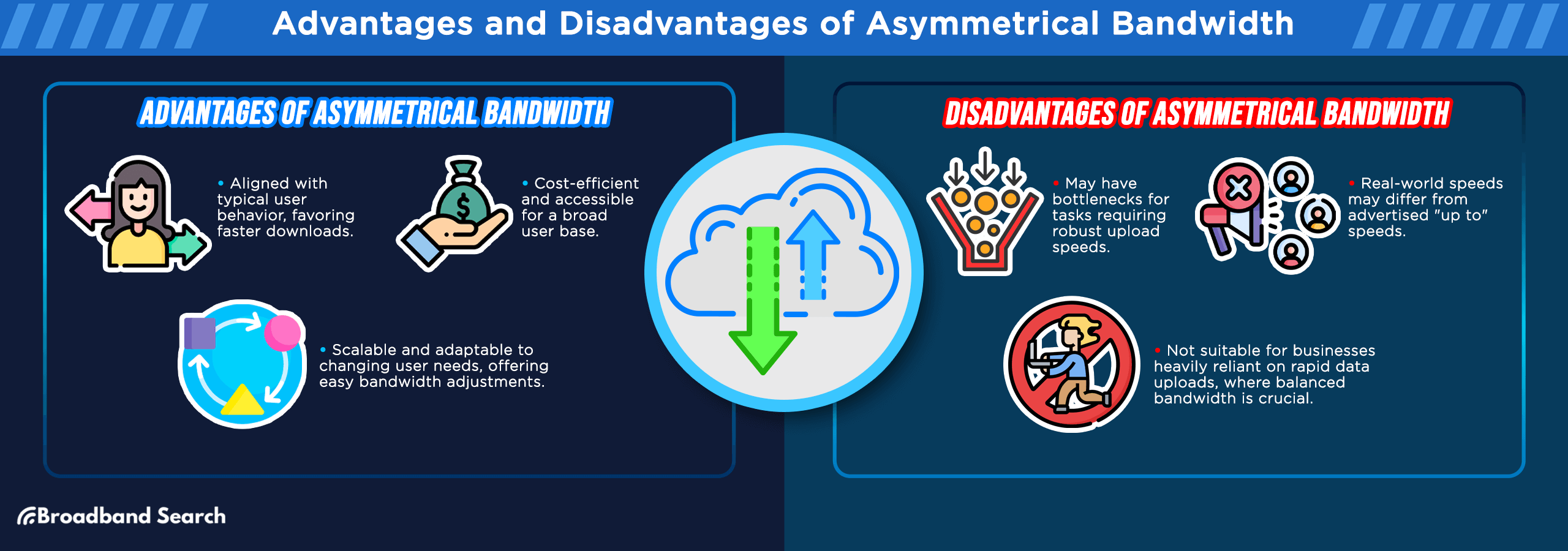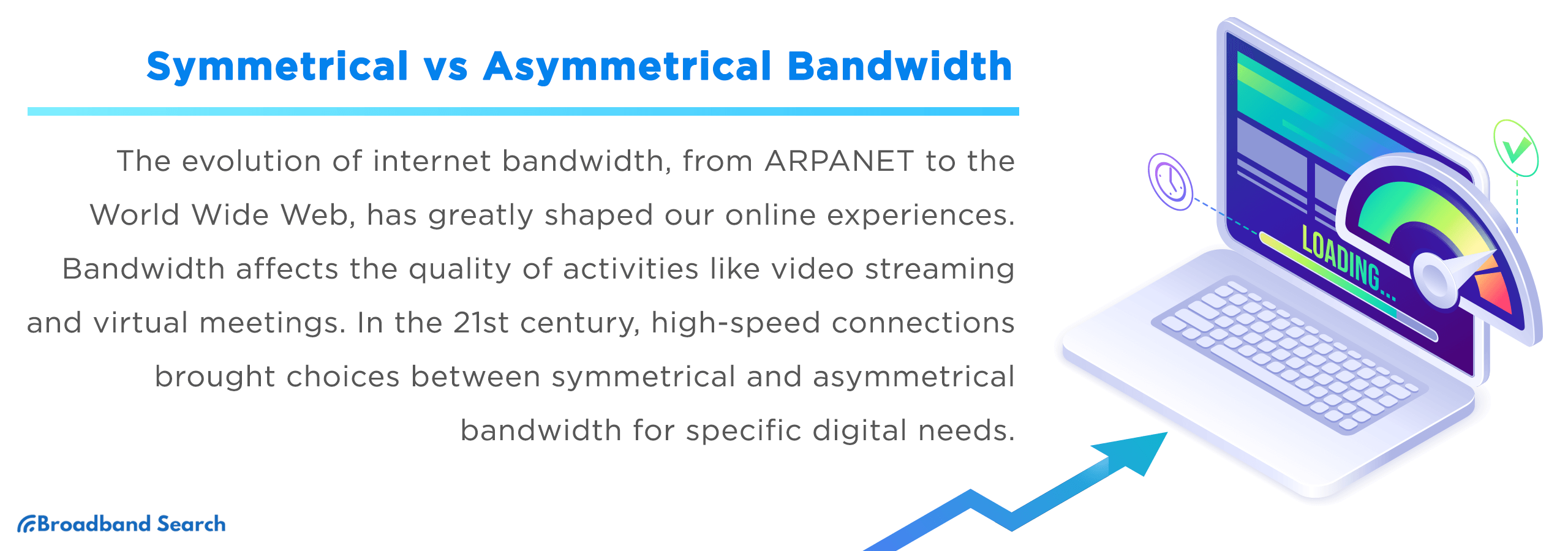The journey of internet bandwidth has been a fascinating one, marked by constant evolution and innovation. From the humble beginnings of ARPANET operating at 50 Kbps circuits in 1984 to the subsequent expansions like the NSFNET and its progressions, the quest for speed and efficiency has been relentless. As the Internet burgeoned, so did the need for enhanced bandwidth. The introduction of the World Wide Web in 1993 further accelerated this demand, even though the initial stages were marked by the limited capacities of 56 Kbps dial-up modems.
Bandwidth doesn't just dictate how fast one's internet connection is; it fundamentally shapes the very nature of our online experiences. Be it streaming a video, attending a virtual conference, or simply browsing a web page, the adequacy of bandwidth directly influences the quality and seamlessness of these interactions. As we transitioned into the 21st century, the era of high-speed connectivity dawned, bringing with it the debates and choices between symmetrical and asymmetrical bandwidth, each catering to specific needs and use-cases in the digital realm.
Understanding Basic Terms
The world of internet connectivity is filled with terms that might sound complex at first glance. However, these terms are simply the building blocks of our online experiences. By demystifying these concepts, we can better navigate and optimize our digital journeys.

- Bandwidth: Bandwidth refers to the maximum rate of data transfer across a network or internet connection. It measures how much data can be sent over a specific connection in a given amount of time. Think of it as a highway: the wider the highway (or more lanes it has), the more traffic (data) it can accommodate at once.
- Latency: Latency, often referred to as "ping", is the amount of time it takes for data to travel from one point to another, usually measured in milliseconds. It represents the delay between sending a request and receiving a response. In everyday terms, it's akin to the delay you might experience between turning on a faucet and water coming out.
- Upload Speed: This denotes how quickly information or data can be transmitted from your device to the internet. Activities like sending emails, posting photos to social media, or video conferencing rely on good upload speeds.
- Download Speed: Contrary to upload speed, download speed measures how fast data can be retrieved from the internet or a local network to your device. This is critical for activities like streaming videos, downloading files, or loading web pages. For many users, download speed is the primary metric of interest as it impacts the majority of online activities.
What Upload Speed Do I Need?
Upload speed, often overshadowed by its counterpart, download speed, plays a pivotal role in shaping our online experiences. While download speeds dictate how fast we retrieve data from the internet, upload speeds determine how quickly we can send data back.
- Live Streaming: For streaming on Twitch, if you want really clear video at 1080p and 60 frames per second, you need an upload speed of 6 Mbps. If you're okay with a bit lower quality at 720p but still smooth motion at 60 frames per second, you'll need 4.5 Mbps. It's a good idea to have a bit of extra speed for other things you might do online and to use a direct cable connection for best results.
- Checking Email: Simple everyday tasks like browsing websites or reading emails don't need much speed. The 1.5Mbps offered by ADSL is plenty for that. However, if you're looking to video chat, share high-quality photos, or broadcast videos live, you'll want a faster upload speed to make sure everything goes smoothly.
- Video Uploads: A 3 Mbps upload speed is generally seen as good, aligning with the FCC's baseline recommendation. However, if someone in your home frequently posts videos on YouTube or engages in remote work, it's advisable to opt for an internet plan offering faster upload capabilities to cater to these more intensive tasks seamlessly.
- Video Calls: For one-on-one video calls, you usually need about 1.5 to 2 Mbps for downloading and 2 Mbps for uploading. However, a faster connection, like 3 Mbps, can enhance the video chat experience, which is why some service providers suggest it. This ensures clearer visuals and smoother interactions during the call.
Symmetrical Bandwidth
Symmetrical bandwidth ensures equal upload and download speeds, making it ideal for tasks like video conferencing and cloud computing. Unlike the more common asymmetrical connections, which prioritize download speeds, symmetrical bandwidth utilizes fiber-optic technology. This allows for hefty data transfers in both directions concurrently. The advanced design of fiber cables, paired with balanced bandwidth allocation by providers, delivers this consistent and even data transmission.

Advantages
- Eliminate Internet Slowdowns: Symmetrical bandwidth guarantees users a hassle-free online journey, devoid of infuriating lags. For instance, when streaming a live sports match or playing an online multiplayer game, symmetrical bandwidth ensures that the experience remains buffer-free, allowing for real-time reactions without frustrating interruptions.
- Quick & Expansive File Transfers: One of the standout benefits of symmetrical connections is the swift upload capability. Imagine a scenario where a media company needs to send a high-resolution film footage to a client for review. With symmetrical bandwidth, this process is significantly expedited, ensuring clients get their files promptly and projects stay on schedule.
- Effortless Cloud Access: When working with cloud platforms, be it Google Drive, Dropbox, or iCloud, the experience is dramatically enhanced with symmetrical bandwidth. For a graphic designer, for instance, saving a large design file or retrieving an old project from the cloud becomes near-instantaneous, ensuring no time is wasted waiting for downloads or uploads.
- Flawless Server Hosting: For those managing online platforms, such as e-commerce websites or multiplayer game servers, uptime is critical. Consider an online store launching a new product. With symmetrical bandwidth, the website can handle heavy traffic, both in terms of users browsing products and making purchases, without crashing or lagging.
- Vital for Business Environments: In professional spaces, like a software development company or a digital marketing agency, symmetrical bandwidth becomes indispensable. Imagine a scenario where developers need to collaborate in real-time on a shared platform or marketers need to conduct a high-definition video conference with international clients. In these settings, the balanced speeds offered by symmetrical bandwidth ensure smooth operations, keeping businesses productive and efficient.
Disadvantages
- Cost: Opting for a symmetrical bandwidth can mean digging deeper into your pockets. These connections, providing equal upload and download speeds, typically have a heftier price tag than their asymmetrical counterparts.
- Not Always Necessary: For many everyday users whose main activities include watching videos or surfing the internet, the high upload speeds offered by symmetrical bandwidth might be overkill. In such cases, the additional speed doesn't necessarily translate to a better user experience.
- Limited Availability: The allure of symmetrical bandwidth might be dampened by its limited reach. Not every locality has access to this type of connection, and even where it's available, not all providers might offer it as part of their service packages.
When Should You Consider Symmetrical Bandwidth
- Business Enthusiast: In the business world, time is money. Having rapid upload speeds can be the difference between sealing a deal or facing delays. Symmetrical bandwidth ensures efficient data transfers, making business transactions and collaborations seamless.
- Working-from-home Professional: With home becoming the new office for many, a stable internet connection is indispensable. Symmetrical bandwidth guarantees smooth video conferences and quick file uploads, ensuring you remain connected and productive with your team and clients.
- Digital Content Producer: For those whose livelihoods depend on content creation and distribution, be it videos, podcasts, or articles, symmetrical bandwidth is a game-changer. It guarantees your content reaches its audience quickly and in the best quality.
- Streaming Enthusiast: If you're into live streaming, whether it's gameplay, tutorials, or any live content, you'll know the importance of uninterrupted broadcasts. Symmetrical bandwidth offers the robust upload speeds required to keep your streams smooth and your audience engaged.
- Student: The digital age has transformed education. Students now regularly share sizable files, participate in online classes, and collaborate on group projects. With symmetrical bandwidth, you can be confident in your ability to handle any online academic challenge swiftly.
Asymmetrical Bandwidth
Asymmetrical bandwidth offers different upload and download speeds, with the latter usually being faster. This design aligns with typical user behavior, as most online activities involve downloading. ISPs prefer asymmetrical bandwidth for residential users because it's practical and cost-efficient. It provides faster download speeds, catering to common online tasks, without the added expense of high upload speeds that many users might not need.

Advantages
- Tailored for Mainstream Consumption: Designed keeping the average internet user's habits in mind, asymmetrical bandwidth is perfectly attuned to the dominant consumption patterns. Since a majority of users typically download more than they upload – whether streaming movies, listening to music, or browsing – this bandwidth distribution optimizes the experience by catering to these primary activities.
- Affordability: Asymmetrical connections offer a strategic balance between performance and cost. Since these connections emphasize download speeds while providing adequate upload rates, they often come with a more attractive price tag. This makes high-speed internet more accessible and cost-efficient for a broader user base.
- Scalability: ISPs have designed asymmetrical services with future scalability in mind. Understanding that user needs can evolve, these services are structured to allow easy bandwidth adjustments. Whether a user requires more download speed for new online games or needs faster uploads for work, the existing infrastructure can accommodate these changes efficiently.
Disadvantages
- Bottlenecks in Specific Tasks: Certain online activities demand robust upload speeds. Live streaming, video conferencing, or uploading sizable data files are areas where asymmetrical connections might falter. The limited upload bandwidth can lead to slowdowns, interruptions, or reduced quality, especially during peak times or simultaneous tasks.
- The Myth and Reality of "Up to" Speeds: Advertisements from ISPs often flaunt speeds "up to" a specific threshold. However, the real-world experience can differ. Network congestion, infrastructure quality, or distance from the main server can influence actual speeds. Thus, while the potential peak speed is marketed, consistent averages might be significantly lower.
- Inefficient for Certain Businesses: Not all businesses can thrive on asymmetrical bandwidth. Companies with a heavy reliance on rapid data uploads, such as media production studios, cloud solution providers, or software development hubs, may find the limitations of asymmetrical connections counterproductive. Their unique demands make a balanced bandwidth crucial for maintaining operational efficiency.
When Should You Consider an Asymmetrical Bandwidth?
- Cost-Conscious Choice: If you're looking to strike a balance between decent internet speed and budget, asymmetrical bandwidth might be the answer. For instance, a startup on a tight budget can still access decent internet speeds without overspending, ensuring operations continue smoothly without breaking the bank.
- Prioritizing Downloads: Asymmetrical bandwidth is tailored for users who primarily download content. Think of movie enthusiasts who stream films in high-definition or gamers who download large game files. In these scenarios, faster download speeds are paramount, even if uploads take a bit longer.
- Everyday Surfing: For the casual internet user, whose activities revolve around reading news, watching videos, or updating social media statuses, asymmetrical bandwidth suffices. Imagine a retiree who spends their morning reading online newspapers and watching cooking videos; they wouldn't necessarily need blazing upload speeds.
- Single-User Optimized: In situations where the internet connection isn't shared among multiple users, such as a studio apartment dweller who lives solo, asymmetrical bandwidth can be ideal. With only one device streaming or browsing at a time, the connection remains consistent and fulfills their needs.
- Hardware Compatibility: Technology evolves, but sometimes our gadgets don't keep up. If you're using an older modem, like those that came before the DOCSIS 3.1 standard, it might not support the faster symmetrical connections. In such cases, opting for asymmetrical bandwidth ensures you get the best out of your existing equipment without necessitating an immediate upgrade.
The Future of Bandwidth
The ever-evolving landscape of technology and communication presents an exhilarating vision for the future of bandwidth. As we stand on the cusp of the next wave of digital advancements, there are several key trends and predictions shaping the horizon of connectivity.
Rise of Newer Technologies
Six decades ago, the concept of a vast digital network stemming from a few interconnected computers was almost unimaginable. Today, we stand at a similar precipice with the quantum internet. While its full potential remains untapped, several proposed applications have been posited, with some already tested. David Awschalom, a leading figure at the University of Chicago and director of both the Chicago Quantum Exchange and Q-NEXT, highlights the revolutionary nature of the quantum internet. He mentions its potential to foster a network of entangled quantum computers, enabling unhackable encrypted messaging, impeccable synchronization via quantum clocks, and collaborative problem-solving that might be challenging for a single quantum machine. And these are just the possibilities we're currently aware of. The unfolding of quantum networks promises to usher in unforeseen and significant innovations.
Predicting User Needs: A Decade from Now
Bandwidth growth, as described by Nielsen's law, increases by 50% yearly, which is slower than the 60% annual growth posited by Moore's Law for computer capabilities. This disparity indicates bandwidth might become a bottleneck for online experiences. The slower rise in bandwidth can be attributed to three main reasons:
- Telecommunication Companies' Conservatism: They are hesitant to make massive infrastructure investments quickly due to the scale and cost.
- User Spending Habits: Many users don't see immediate benefits from bandwidth upgrades, as the internet's speed depends on multiple factors beyond an individual's connection.
- Broadening User Base: The internet is attracting a wider, more mainstream user demographic, many of whom have lower-end connections, skewing the average bandwidth demand downwards.
The Global Push towards Universal High-Speed Internet
The last few years have witnessed a concerted global effort to bridge the digital divide. From tech giants deploying satellite constellations to ensure global internet coverage, to governments rolling out national broadband plans, there's a universal recognition of high-speed internet as a fundamental right. The ambition is clear: to bring robust, affordable internet access to every corner of the globe, ensuring that every individual, irrespective of their location or socio-economic status, can tap into the boundless opportunities of the digital age. Additionally, Universal Broadband, gaining traction in developed nations, aims to ensure government-backed, affordable internet access for all. While its implementation promises to bridge the "Digital Divide" and enhance economic efficiency by facilitating online services and market competition, there are concerns. Critics point to potential undue benefits for telecom giants, financial strains on these companies when serving low-revenue areas, and the risks of market distortions due to heavy government intervention.
Conclusion
In our rapidly digitizing world, the distinction between symmetrical and asymmetrical bandwidth becomes ever more pertinent. Making informed decisions on the type of connection to adopt can drastically influence one's digital experience, from professional work environments to leisurely streaming sessions at home. While symmetrical bandwidth, with its equal upload and download speeds, is a boon for tasks like video conferencing and large data transfers, asymmetrical bandwidth, with its download-prioritized design, caters to the majority of consumers who primarily consume content.
Both types play pivotal roles in the digital ecosystem, serving varied yet critical purposes. As technology and user demands continue to evolve, staying informed and adaptable becomes imperative, ensuring that we harness the full potential of our internet connections in this interconnected age.
FAQ
What is bandwidth throttling?
Bandwidth throttling refers to the intentional slowing or speeding up of an internet service by an Internet Service Provider (ISP).
Can weather affect my internet connection?
Yes, especially if you're using satellite internet. Severe weather conditions can disrupt the signal.
Why is my internet slow during peak hours?
During peak hours, more users are online, causing increased traffic and potentially slowing down the network.
Why is upload speed slower than download speed?
Most users download (consume content) more than they upload (send data). ISPs prioritize download speed in asymmetrical connections to cater to general consumption patterns.
How does a data cap work?
A data cap limits the amount of data you can use in a given period. Exceeding this limit might result in extra charges or reduced internet speeds.

